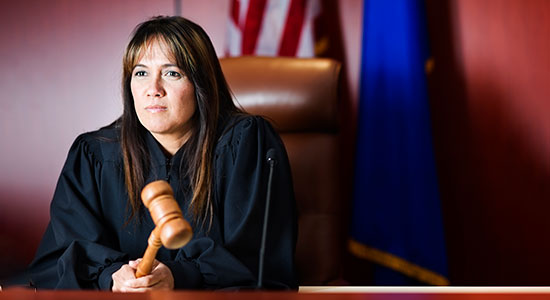
In the early years of the Western District Federal Court’s “rocket docket,” I recall Judge Barbara Crabb and Judge John Shabaz wrestling with how to interpret the Gordian knot of patent claims.
How, in the name of all that constitutes the English language, could someone create an endless string of arcane and archaic terms, seemingly haphazardly arranged, to describe the simplest invention? And if the invention was not so simple … now that was as a lawyer’s paradise (assuming “paradise” in the world of patent litigation is a never-ending flow of billable hours).
The cause of this patent mess, my colleagues before the bar argued, was the inevitable consequence of “nonlawyers” writing the claims. In point-of-fact, patent claims were often written by nonlawyers, or engineers come lately to the practice of law. Of course, this argument is all lawyer-induced mythology, but that discussion is for another day.
Judge Crabb’s and Judge Shabaz’s patent claim dilemma illustrates a much bigger issue that lawyers often miss – finding a way to help the court resolve the case.
Listen to the Court
Time and time again, sitting as a circuit court judge, I found myself wondering what the lawyers were up to. Why were they doing this? What’s the purpose of that oral comment, written brief, or endless affidavit?
Having by then practiced law off the bench for more than three decades, I was embarrassed to think of the times I, too, made no sense to the court. Judges, I quickly learned, were kind to a fault. (Maybe bored, but kind, too.)
When a judge asks, “What’s the point, counsel,” that lawyer is given a rare glimpse in a judge’s fundamental psyche. The judge really does not understand.
Literal and Necessary Theatrics
Let’s be honest, while lawyers often do speak in ways that may be impressive to the client (a satisfied client is indeed a good thing), they are simultaneously wasting time and energy on so many things that just do not matter to the court.
 Judge James Troupis, Northwestern 1987, served on the Dane County Circuit Court in 2015-16, and is currently principal at Troupis Law Office in Cross Plains, where he advises corporations and individuals on complex financial, litigation, and public policy matters.
Judge James Troupis, Northwestern 1987, served on the Dane County Circuit Court in 2015-16, and is currently principal at Troupis Law Office in Cross Plains, where he advises corporations and individuals on complex financial, litigation, and public policy matters.
Instead of focusing on the fine points of law or the latest box score on which lawyer has the upper hand, a lawyer ought to keep in mind that most courts are only interested in what helps resolve the case. What you are doing before the court is meaningless if it does not assist the court in resolving the matter.
It was not uncommon years ago for counsel to request the court actually look at the machine causing the problem or make a site visit to explain the ‘taking.’
Then-attorney Stephen Crocker (now magistrate judge) and I hired a local theater set designer to create an exact replica of a jail cell to illustrate conditions at a juvenile facility in order to communicate what the court and jury needed to understand. My colleagues and I once created an entire animated version of DNA replication to explain what was at stake in a patent matter before Judge Vaughn Walker in the Northern District of California.1
Consider the Jury, Consider the Court
Judges cannot appropriately resolve cases without understanding the matter in practical terms. Great plaintiff’s lawyers have understood the need for the jury to see the issue through pictures and such, but too often counsel do not take the time to be equally concerned with the court’s understanding of those same facts.
The world of patent litigation is most instructive, because a court simply cannot resolve any case without first understanding what the patent claims mean – what the invention is, in a very practical, non-legal, context. Judge Crabb’s and Judge Shabaz’s dilemma was repeated in virtually every Federal District Court, and it had to be resolved. The lesson it provides is a good one.
Over time, the patent dilemma was solved by attorneys thinking outside the box and proposing separate hearings or filings simply focused on the patent terms.2 Those hearings have morphed over the years into sometimes marvelously elaborate presentations of engineering and science.
Too often, lawyers either miss the opportunity to explain, or are reluctant to explain much of what is really involved. Perhaps that reluctance is borne of fear the court will rule such matters are out-of-bounds, or perhaps it is the result of a fear the opposing side will take advantage of the information.
But if the court does not understand the underlying technology, the underlying industry, the underlying politics, the real stakes for the parties … the infinite possibilities, then the resolution the court reaches may be nothing more than a legal coin toss. As a judge, I understood, perhaps for the first time, how little the court really knows before it decides.
The Takeaway
The lesson of all this – always consider what will help the court decide the case. If it does not fit into your plans, change your plans. If you must push beyond a strict meaning of the rules, test the rules with a suggestion the court consider something else. And above all, ask the court what you can do to help the court. You may be surprised at the candor of the answer.
This article was originally published on the State Bar of Wisconsin’s Litigation Section Blog. Visit the State Bar sections or the Litigation Section web pages to learn more about the benefits of section membership.
Endnotes
1 See Hoffmann-LaRoche, Inc. v. Promega Corp, 323 F3d 1354 (Fed. Cir. 2003).
2 See Markman v. Westview Instruments, Inc. 517 U.S. 370 (1996).
